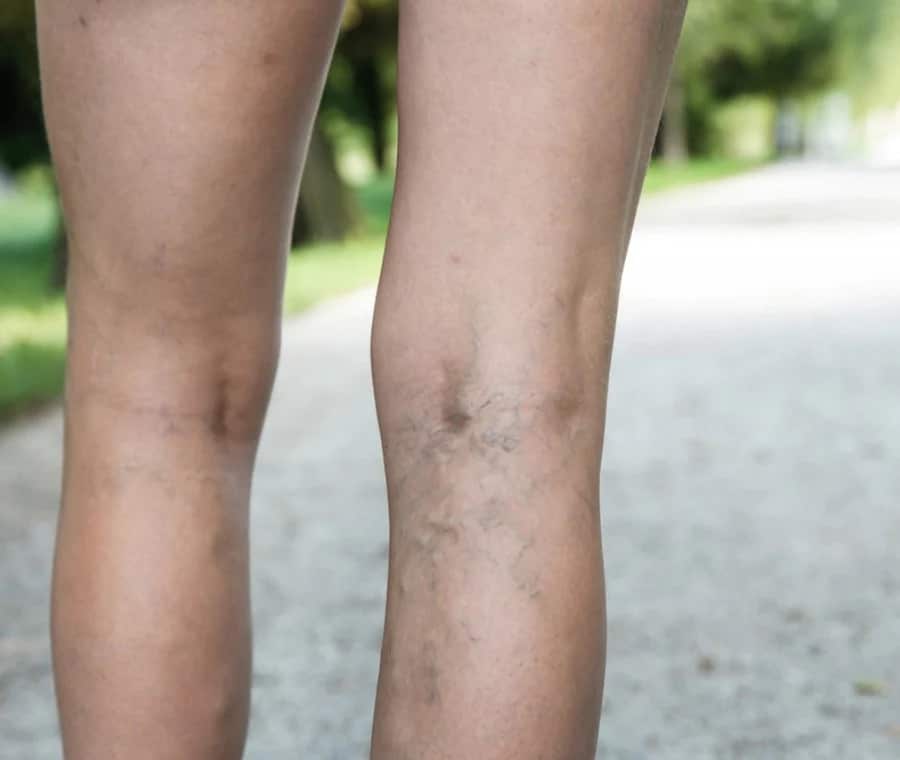Varicose veins of the lower limbs
Definition
 Varicose veins are dilated superficial veins in the lower limbs. Usually there is no obvious cause. Varicose veins are usually asymptomatic but can cause a feeling of swelling, tightness, and pain or tenderness in the legs. The diagnosis is made on the basis of physical examination. Treatment may include compression, wound care, sclerotherapy, and surgery.
Varicose veins are dilated superficial veins in the lower limbs. Usually there is no obvious cause. Varicose veins are usually asymptomatic but can cause a feeling of swelling, tightness, and pain or tenderness in the legs. The diagnosis is made on the basis of physical examination. Treatment may include compression, wound care, sclerotherapy, and surgery.
Varicose veins can occur alone or in the presence of chronic venous insufficiency and can also develop after deep vein thrombosis.
Etiology of varicose veins
The etiology is usually unknown, but varicose veins can result from primary valvular insufficiency with reflux or from primary dilation of the vein wall due to structural weakness. In some people, varicose veins are secondary to chronic venous insufficiency and venous hypertension. Most patients have no obvious risk factors. Varicose veins are common in families, indicating a genetic component as the cause. Varicose veins are more common in women because estrogen damages the structure of veins, and pregnancy increases pressure in the pelvic veins, lower limb veins, or both. Rarely, varicose veins are a symptom of Klippel-Trénaunay-Weber syndrome, which includes congenital arteriovenous fistulas and diffuse cutaneous capillary angiomas.
Symptoms of varicose veins
Varicose veins may initially be tight and palpable but not necessarily visible. Subsequently, they may gradually increase in volume, protrude and become apparent; they can cause a feeling of swelling, tiredness, tension and superficial pain or tenderness in the legs. Varicose veins are more visible when the patient is standing.
For unclear reasons, stasis dermatitis and venous stasis ulcers are rare. When skin changes (eg, induration, pigmentation, eczema) occur, they usually involve the medial malleolar region. An ulcer can develop in the affected areas after even modest trauma; they are usually small, superficial and painful.
Varicose veins sometimes thrombose, causing pain. Superficial varicose veins can cause fine skin blisters, which can break and bleed even after minimal trauma. Very rarely, such bleeding, if undetected during sleep, is fatal.
Diagnosis of varicose veins
Clinical Assessment
Sometimes Doppler ultrasound
The diagnosis is usually obvious on physical examination. The Trendelenburg test (comparing venous filling before and after release from a thigh tourniquet) is no longer commonly used to identify retrograde blood flow through incompetent saphenous valves.
Duplex Doppler ultrasound is a thorough examination, but it is not clear if it is a necessary routine.
Treatment of varicose veins
Elastic Stockings
Sometimes minimally invasive therapy (eg, sclerotherapy, thermal ablation) or surgery
Treatment aims to reduce symptoms, improve leg aesthetics and, in some cases, prevent complications from varicose veins. Treatment includes compression stockings and local wound care if needed.
Minimally invasive therapy (eg, sclerotherapy) and surgery are indicated for the prevention of recurrent variceal thrombosis and skin changes; these procedures are also typically used for cosmetic reasons.
Sclerotherapy uses an irritant (eg, tetradecyl sulfate) to induce a thrombophlebitic reaction that progresses to fibrosis and closes the vein; however, many varicose veins recanalize. The surgery includes ligating or stripping the great saphenous vein and sometimes the small saphenous vein. These procedures have a good effect on short-term symptom relief, but long-term efficacy is poor (ie, patients often develop recurrent varicose veins).
Laser or radiofrequency thermal ablation is another minimally invasive tool for the treatment of varicose veins.
Regardless of treatment, new varicose veins develop and treatment often has to be repeated indefinitely.
To know
Varicose veins are more common in women than in men.
Symptoms may include heaviness, fatigue, pressure, bleeding, and leg pain or tenderness; stasis dermatitis and venous stasis ulcers are rare.
Treatment may include compression stockings, sclerotherapy, minimally invasive surgery or thermal ablation
Regardless of treatment, varicose veins often reappear.